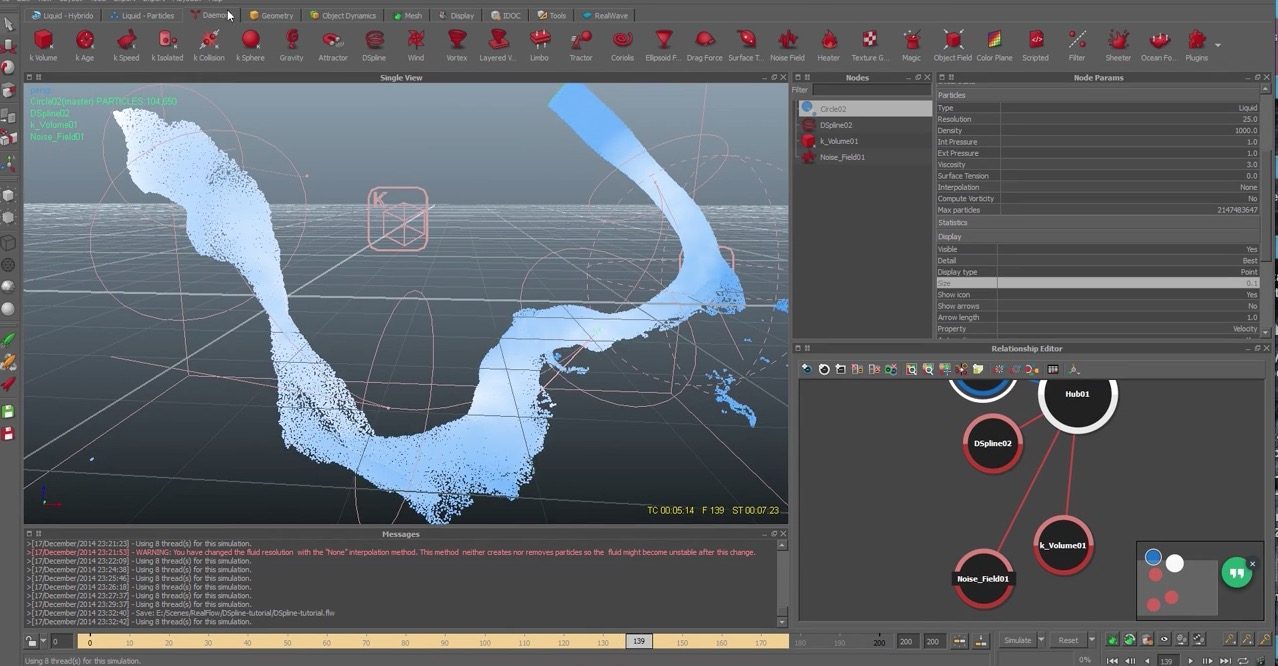

With “Use Geometry Velocity” the interaction will happen in time again. Here, RealFlow | Cinema 4D uses very large substeps to speed up the simulation.ĭue to these large steps the interaction between the object and the fluid is delayed.

Imagine an animated object falling into a container with calm water.

When enabled RealFlow | Cinema 4D will adjust the simulation's substeps to get a correct fluid-object interaction behaviour:

With values smaller than 1.0, the fluid can cover a longer distance within a single step – the solver is less strict.With a value of 1.0, the fluid will not move more than 1 grid cell in the current simulation step.RealFlow | Cinema 4D calculates how fast the fluid will move within a simulation step (aka "time step" or "substep", see below): “Time scale” works as a factor: 2.0 means that the fluid will be two times faster. Values smaller than 1.0 will decelerate the fluid settings greater than 1.0 have an acceleration effect. When this option is checked RealFlow | Cinema 4D will always use the maximum number of threads. If you wanna dive into the world of RealFlow these tutorials offer plenty to get started.Here you specify how many computer processors and cores you want to use with your simulations. RealFlow ships with a standalone installation(with connectivity plug-ins) or as a dedicated plug-in for many 3D applications like Cinema 4D and Maya. It also comes with Python support which makes custom scripting a lot easier. The software is flexible enough for small and large water environments with GPU acceleration for faster iteration. It has been used on plenty of blockbuster films like Avengers and X-Men. RealFlow is a powerful VFX program for creating realistic liquid simulations for 3D & CG projects. That means if you buy something we get a small commission at no extra cost to you( learn more) Resources 3D Written by Ben Traje Disclosure: This post may contain affiliate links.


 0 kommentar(er)
0 kommentar(er)
